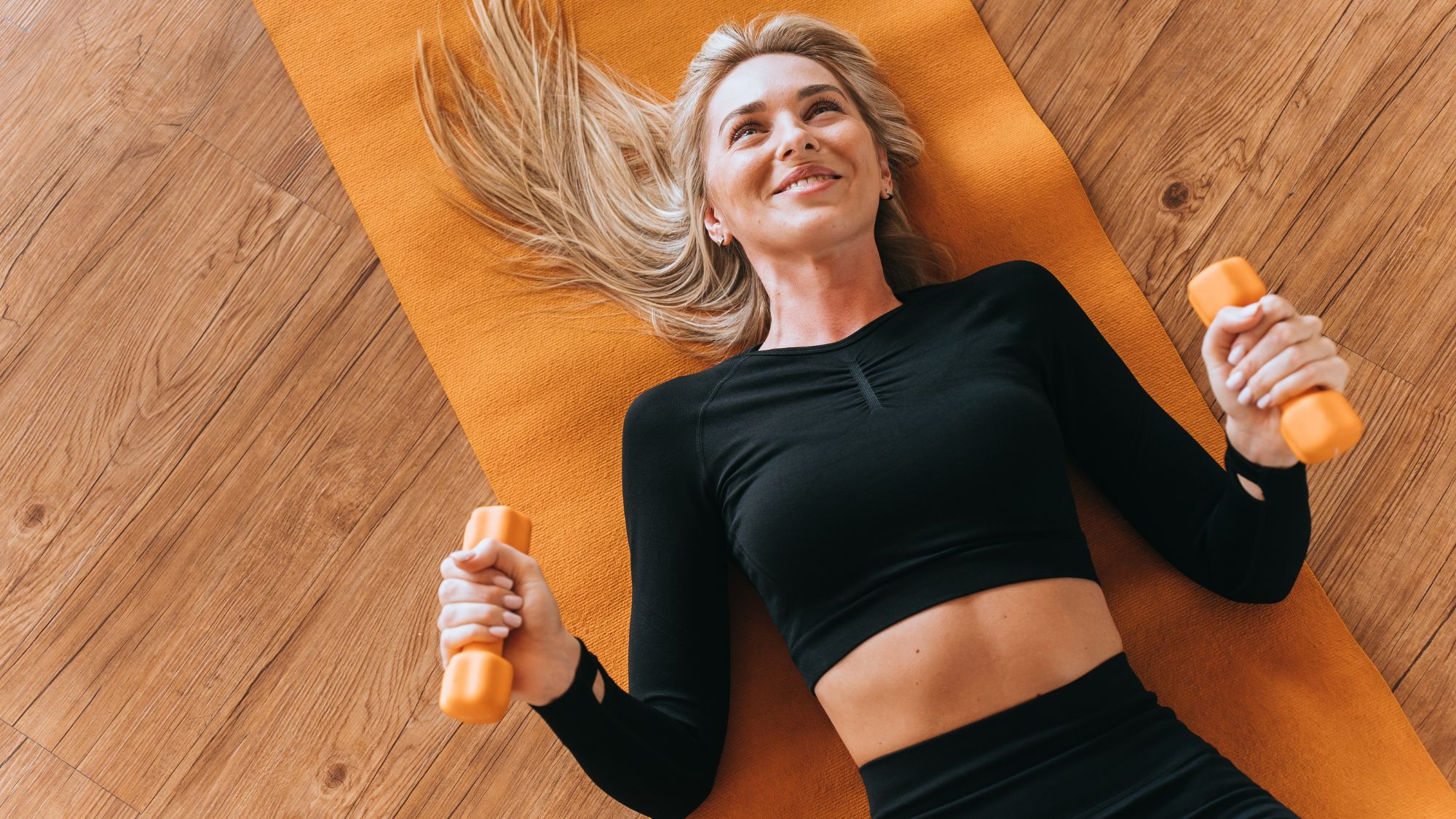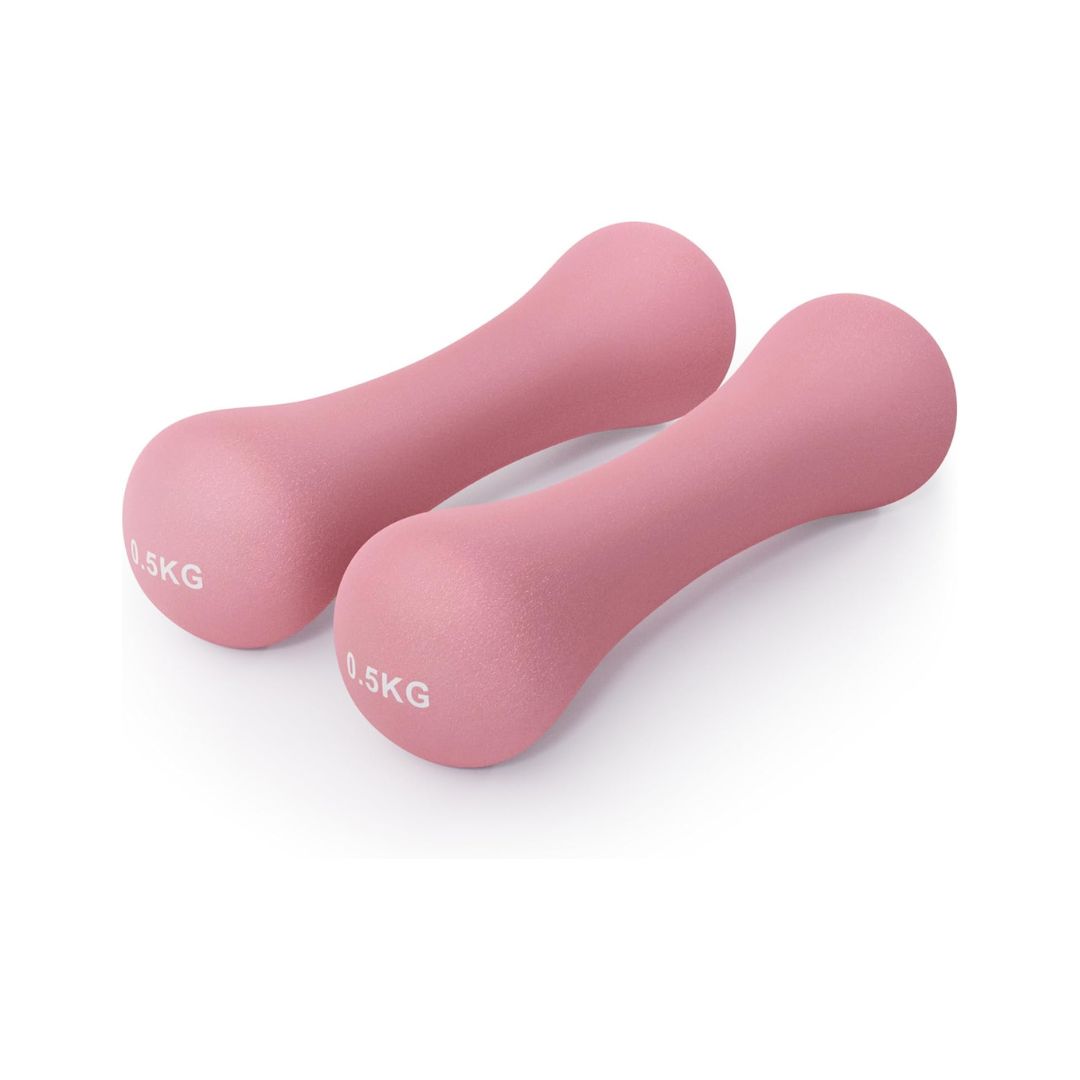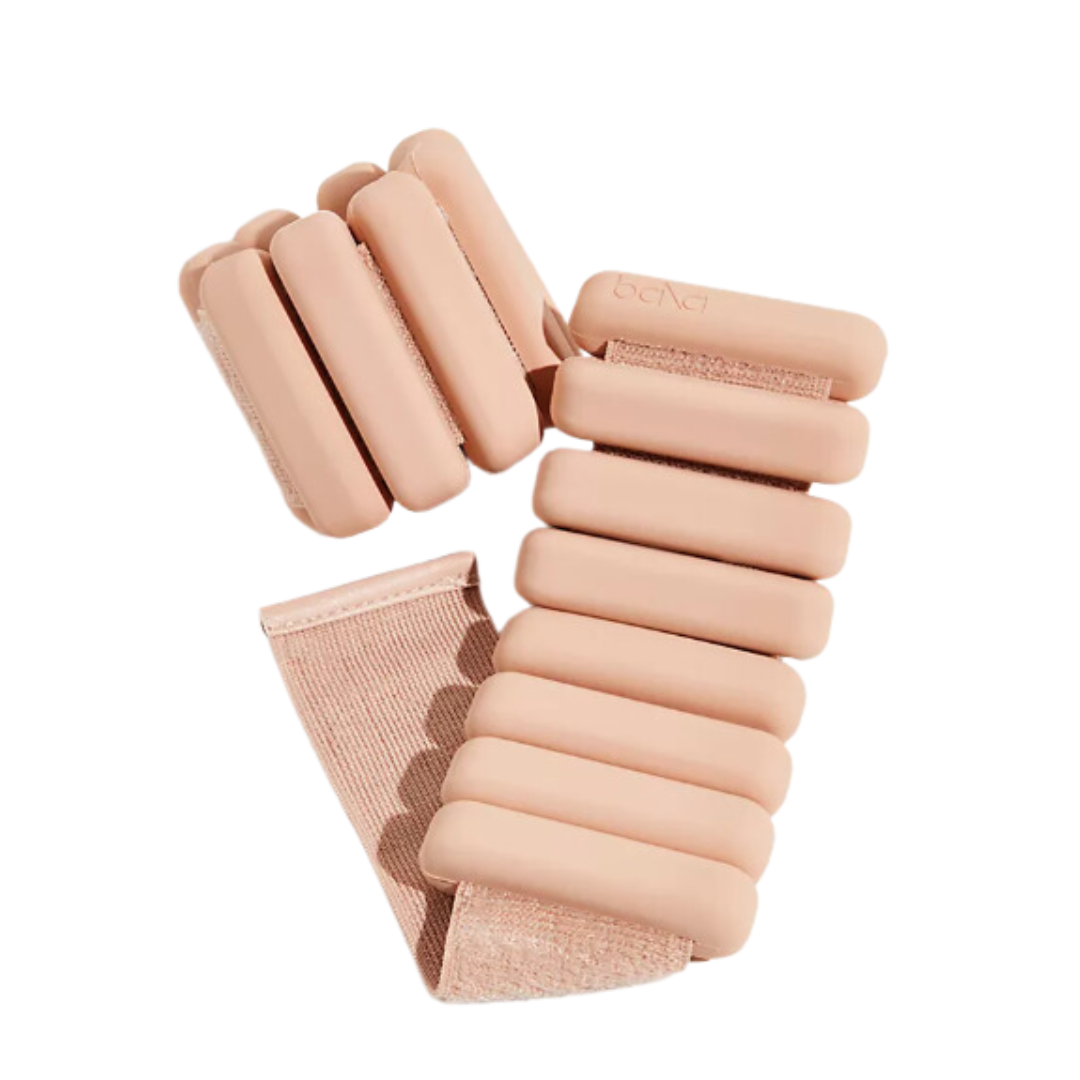Weighted Pilates exercises are one of the easiest ways to take your home sweat sessions up a notch - 5 best to try
Take your training to a whole new level.


If you're looking for a way to up the ante of your Pilates training, consider giving weighted Pilates exercises a go. Pilates truly is the trend that keeps giving this year, with variations including the beloved Reformer Pilates, wall Pilates, and Tower Pilates doing the rounds on social. But, spoiler alert: you don't need to get to a studio with fancy kit to work on your strength.
In fact, classical mat Pilates is built on the premise that you can build strength with your body alone. And, if you've tried Pilates classes before, you'll know just how much the movements can test your strength, equipment or no equipment.
That said, just like any other workout, we need to keep challenging the body to progress. Which is why, if you're a long-time Pilates lover looking for a way to boost strength, weighted Pilates exercises are easily one of the best variations to try (plus, you can do them from home without having to spend £25 a pop on an in-studio Reformer class).
"Weighted Pilates exercises aren't found in classical Pilates classes but are used in contemporary Pilates to increase the load and difficulty of the exercise," explains Jo-Leigh Morris, a Pilates instructor and head of mobility at BXR.
Here, Morris and myself, Fitness Editor Chloe Gray, share everything you need to know about weighted Pilates exercises. Looking for Pilates exercises for beginners to try? Read about the five Pilates moves I swear by for building strength.
Weighted Pilates exercises are trending: your guide
Is Pilates with weights effective?
Adding weights to Pilates supercharges the already benefit-packed practice, so yes, it can be very effective. "Traditional Pilates is a full body method that is designed around the alignment of the hips and spine," reminds Morris.
Many of the exercises are focused on improving mobility, strength and function of the muscles and joints. In contemporary Pilates - the name given to modern Pilates classes that use the same foundational movement patterns of classical Pilates but add twists or different kit - there is a focus on also building muscle and tapping into other elements of fitness.
Celebrity news, beauty, fashion advice, and fascinating features, delivered straight to your inbox!
"Contemporary Pilates will add weights to exercises like squats, lunges and upper body movements with the intention of stressing the muscles further to build strength," says Morris.
In the same way that adding extra weight to a workout in the gym will challenge the muscles to keep them growing, adding weights to Pilates moves will encourage muscle growth. A 2020 study from The Journal of Strength and Conditioning Research even found that high-rep exercises with weights - as you'd be performing in weighted Pilates - led to the same strength gains as traditional heavy strength training.
A post shared by Jo-Leigh | Pilates (@joleighmorris)
A photo posted by on
How heavy should weights for Pilates be?
So exactly how much weight should you be using in weighted Pilates exercises? As the rest of Pilates training will stay the same - meaning you'll be working on form, flexibility and reps - you should opt for very light weights.
"I'd opt for light dumbbells ranging from one to 2.5kg. You could also use ankle weights around the same weight. It’s surprising how much you can feel the burn with the smaller weights," says Morris.
A small Malaysian study supports that. Researchers asked participants to use 500g ankle and wrist weights or 1kg dumbbells to exercise three times a week and, after six weeks, saw improvements in body composition and a reduced risk of cardiovascular disease.
While these weights are light enough for beginners, it's best to get to grips with Pilates form before testing them out. "I would recommend if you have been practising Pilates for a while and looking to challenge yourself, then add in weights," says Morris.
5 best weighted Pilates moves to try
According to Morris, these are the five best weighted Pilates moves to try.
1. Kneeing side leg lifts
What? A glute-focused exercise that can be enhanced with weights.
Why? Your glutes are the largest muscle in your body, so strengthening them is vital - and can require extra resistance. "You can place the weight onto the side of the leg to load it further, or even add it to the top hand to turn this into a full-body move. There are a lot of different combos you can create here," says Morris.
How to? Lie on your right-hand side with your head resting on your right arm. Place your right leg at a 45-degree angle from the body with your heel in line with your hips and keep your left leg straight. Pull your left hip back so it's directly on top of your right hip. Lift your left leg away from the floor, keeping your hips stacked, then lower. Place the dumbbell on top of your left hip for resistance or in your left hand and point it straight to the ceiling. You could also place an ankle weight around your left foot. Repeat on the other side.
How long for? Stick with high reps - around 20 per side, and repeat two or three times.
2. Weighted donkey kicks
What? Another glute exercise, this works hip mobility and strength.
Why? Working through hip extension with a dumbbell will build functional strength while isolating the glute. It's tough even without a dumbbell, so only build up when you're ready. "The challenge will also be to keep the core locked and spine neutral throughout creating a deeper core workout," says Morris.
How to? Begin in a tabletop position on your hands and knees with your shoulders directly over your wrists and hips over your knees. Place a small dumbbell behind your right knee and squeeze your heel towards your glute to make sure it doesn't slip. Pull your belly button in to engage your core, then press your right heel up towards the ceiling. Avoid arching your back here - keep your stomach still and engaged as your glute lifts the leg. Lower back down. Repeat on the other side once you've completed all the reps.
How long for? Aim for 12 or more reps per leg, repeating two or three times.
3. Weighted roll ups
What? A spinal mobility movement that can be supercharged with weights to deepen the work in the core.
Why? "This is a great traditional exercise and in a classical studio this exercise is done with a weighted bar - though you can use dumbbells or other weights - there are loads of variations, and you can also hold in the midway c-curve position while doing upper body exercises like bicep curls or presses," says Morris.
How to? Begin seated on the floor with your legs extended in front of you. Hold dumbbells, a weighted Pilates bar or a Pilates ring in your hands extended at shoulder height. Find your spinal "c curve" - rounding the back so your arms move further towards your toes. Pull your belly button towards your spine as you start to roll your lower back towards the floor, maintaining the curve in your upper back. Lower so your whole spine is flush against the floor, then take your arms overhead. Roll up by reversing the motion: lifting your arms over your shoulders then tucking the chin, rounding the back and pulling up to seated.
How long for? Try to do around 10 reps.
4. Pilates lunge
What? Lunges are used in all Pilates classes, from traditional to Reformer, as they work one side at a time for improving stability.
Why? Adding a dumbbell to your lunges simply adds more resistance. You can hold them by your sides or, for an extra challenge, hold the dumbbells in front of you or in a half curl position.
How to? From a tall standing position, step your right foot back. Ensure the right toes are in line with your right hip rather than behind your left foot. Keep your chest tall and open. Drop your left knee towards the floor, lowering down rather than forwards, then press through your right foot to come back to standing. Make sure you repeat on the other side.
How long for? Lunges are a great exercise to add interesting rep ranges to. You could try 20 reps of lunges then add pulses or static holds while you lift the weights with your upper body for an extra challenge.
5. Pilates Hundred
What? You can't get more classic than a core-challenging Pilates hundred exercise.
Why? Pilates hundred is great for training core strength, stability and total body connection. Reformer classes often do this move with straps to add extra resistance, so there's no reason you can't add dumbbells too (just make sure they're light).
How to? Begin lying on your back. Beginners should start with their feet flat on the floor and knees pointing towards the ceiling. The second variation is with legs in table top - your knees over your hips - and an even more advanced variation is with your legs straight out, hovering over the floor. In all variations, pull your belly button to your spine and close the gap between your lower back and the ground. Extend your arms long - hold weights in your hand or use wrists weights - and pulse them up and down.
How long for? The clue is in the name: you do 100 arm pumps in this move. You can break it up into five sets of 20 or any other variation, if you need to.
Shop MC UK's go-to Pilates kit now:
What's the best type of Pilates?
All types of Pilates have unique benefits and all are great for your body. The best type depends on your goals - for instance, Reformer Pilates is excellent for those looking to improve mobility as the springs and straps can help you pull a little further into your moves. For someone looking to supercharge their strength, weighted Pilates would be the best way forward.
Given all Pilates variations are based on the main tenants of classic Pilates, you should improve many elements of physical fitness and mental focus with every type of Pilates.

Chloe Gray is a freelance journalist who writes and talks about health, fitness, and wellbeing through a feminist lens. She was part of the launch team for Stylist magazine's fitness brand, Strong Women, and has written for i news, Women's Health, Red magazine, Good Housekeeping, Refinery29, and more. She's all about building mental and physical strength, eating delicious food that fuels you well, and making the fitness industry more accessible and enjoyable. She's also a qualified fitness trainer and research nerd, so you can be sure everything you read is backed by proper science.





